“We’re running a marathon at a sprinter’s pace. We need to find a way to slow down and stride out.”
“We need to lower stress and increase well-being for our staff.”
“We need a way to stand out as an employer of choice to recruit new employees and retain the great ones we have.”
If you are in management or leadership of a nonprofit, chances are high that you’ve discussed and debated some or all the statements above, or some variation. For us at MNA, these were the topics du jour as we ended 2021 and considered how to improve our work and ourselves heading into 2022.
I work with a bunch of high performers and overachievers. We have a great team and we have done some great things over the past few years. But we are also consistently working too much, going too hard, and pushing too far to be sustainable for our long-term health and well-being. And that’s not okay – for each of us individually, for MNA, and for the mission we serve (I imagine many of you feel the same way about yourself, your team, and your mission).
So, we sat and wrestled with this tension at the end of last year and considered both small and big changes that would enable us to more deliberately center balance and well-being for our team while not sacrificing an ounce of impact for the mission we serve.
Opportunely, coincidentally, providentially – whatever term you prefer – we learned of a work-life balance pilot launching in 2022 that piqued our interest. A North American pilot of a four-day work week, to be exact. 4 Day Week Global was looking for fifty companies and organizations across the US and Canada to start a formal pilot of a reduced-hour work week starting in spring of 2022. We applied and got in.
The concept of a four-day week is simple: reduced working hours without a reduction in pay. The one (and only one) written-in-stone precept of the four-day week is 100:80:100 – 100% pay for 80% of the hours AS LONG AS the organization can maintain 100% productivity. That precept becomes the contract between the organization and its employees. The organization commits to maintaining 100% of the pay in exchange for the employees working 80% of the hours (32 hours/week instead of 40), as long as the employees can structure their time and work to maintain 100% of the needed productivity and mission impact.
The working hypothesis supporting the four-day week is the belief that our current work habits aren’t without slack – we don’t work at 100% productivity and efficiency; we physically can’t work at 100% productivity and efficiency. Our work will fit into the container that we give it. For most of us, the container is 40 hours per week.
The four-day week hypothesis acknowledges that we have “slack” in our daily operations and that our ability to do the work and create impact will fit into the container that we give it. And that we can shrink the container slightly (20% less) and still fit the same (or more) amount of work into that container IF we empower each member of the team to make the individual and collective changes necessary to be productive and to do the mission. The earliest adopters of the four-day week have proven out this hypothesis, and the global pilot that we were accepted into is designed to show – with third-party, academic research – that the early successes are reproduceable at scale and across industries.
We are a couple months into our pilot experience – we started on April 1. So far, our experience has been good but not perfect. It has definitely increased employee well-being. And by every objective metric, we are maintaining or exceeding the productivity and impact that we want and need to achieve.
But internally, we are a work in progress on clearly and cleanly becoming more efficient in our day-to-day work and knowing what to “throw out of the container” to make this sustainable over the long-term. We are making progress and we believe we will get there. But it is a daily habit that we need to put into practice, and old habits are hard to change.
We share this all with you all now because we want to learn out loud. Regardless of whether you think is applicable in your work and regardless of whether we decide to adopt a four-day week beyond the six-month pilot, we think this is the type of creative idea to consider to invest in our people and stand out in a crowded and competitive hiring environment. We look forward to continuing to share our learnings and experience in the coming weeks and months. And, most importantly, we look forward for continuing our service to you and to our sector throughout the pilot period.
If you’d like to talk more about the pilot, feel free to email us at [email protected]. If you’d like to learn more about the pilot (and future pilots launching soon!), visit www.4dayweek.com.
Thanks for reading.
~ Adam
Adam Jespersen
Associate Director

